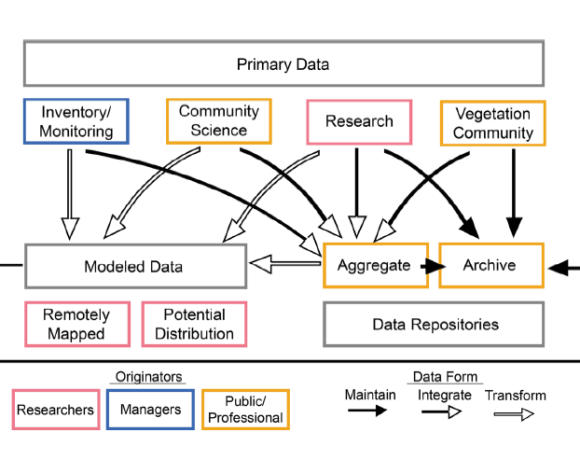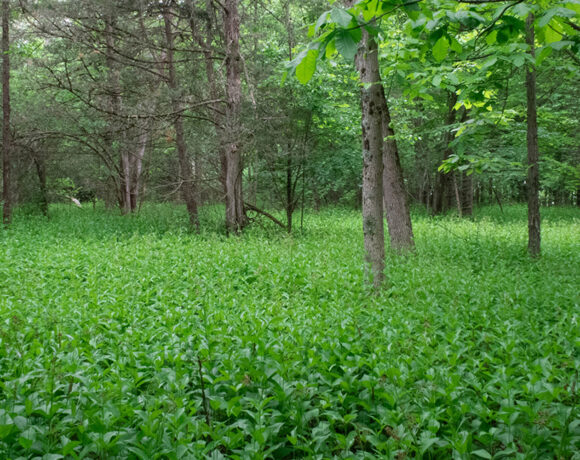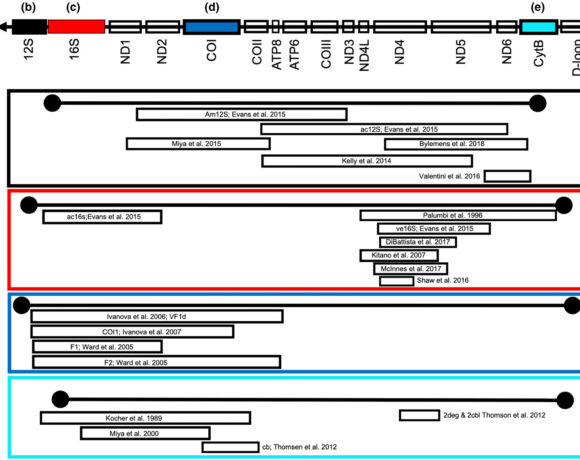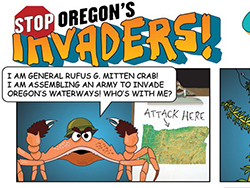Promising but atypical: New evidence on water chestnut biocontrol host choice and feeding
Simmons, W. and Blossey, B., 2023. Host plant phylogeny does not fully explain host choice and feeding preferences of Galerucella birmanica, a promising biological control herbivore of Trapa natans. Biological Control, p.105201. https://doi.org/10.1016/j.biocontrol.2023.105201
Summary written by Wade Simmons, edited by Justin Dalaba
Summary
A critical step when evaluating safety of a new biological control agent is to identify potential non-target impacts on native species. To determine non-target risks, modern host specificity testing of potential biocontrol agents follows a formalized process that prioritizes testing close relatives of the targeted plant species. Closely related plants are more likely to share traits that are important in the host-finding behaviors of plant-feeding insects. Structuring test plant lists by relatedness to target plant has produced an excellent track record for safety in weed biocontrol, where non-target impacts are both rare and well-predicted. Results from host-specificity testing of the leaf feeding beetle, Galerucella birmanica, a promising biocontrol herbivore for invasive water chestnut (Trapa natans) , partially follow the pattern predicted by plant relatedness, but not completely. Instead, plant species used by other Galerucella beetles appear more informative than plant relatedness to water chestnut in explaining behaviors of G. birmanica. While host-plants of related insects are an existing category for inclusion of plants in host-specificity screening, these surprising results underscore the need to re-evaluate when and how this ecological information is being applied for safety screening of candidate biological control insects.
In addition to documenting a departure from predictions in host-specificity testing, Simmons and Blossey present new evidence on the potential impacts and safety of water chestnut biological control. Previous research has demonstrated that herbivory by G. birmanica is likely to reduce T. natans population growth rates in North America (Blossey et al. 2018). This additional research shows that all tested forms of Trapa (5 populations including 2 morphotypes) were attacked by the insect, raising the prospects of effective biological control across variations in Trapa growth forms. Host specificity testing shows a narrow host range of G. birmanica, but in line with previous data from China, G. birmanica may occasionally feed and lay eggs on the non-target plant water shield, Brasenia schreberi. However, presence of feeding damage is not equivalent to risks to populations, and the authors present several lines of evidence suggesting a low level of risk to B. schreberi populations. Taken together, results in this paper further support Galerucella birmanica as a safe and promising biocontrol herbivore for invasive Trapa natans in North America, if regulatory agencies grant release approval.
Key take-aways:
- G. birmanica appears effective against multiple water chestnut growth forms, and shows a very narrow host range
- While G. birmanica may occasionally feed and lay eggs on water shield, risks to B. schreberi or other native plant populations appear extremely low
- G. birmanica feeding on B. schreberi is poorly explained by relatedness of the plant to water chestnut, but the plant is a host for other Galerucella species
- Host-specificity testing methods should more formally include host associations of highly related insects as a factor when developing test plant lists
Management Implications:
- Biological control appears to be the only meaningful management option to reduce Trapa impacts at the landscape scale in North America
- Minor non-target feeding is expected, but unlikely to affect native plant populations
- G. birmanica is expected to attack a broad range of Trapa populations in North America, further supporting its potential effectiveness as a biocontrol agent if release approval is granted
- All management decisions involve risk, and biocontrol risks should be considered alongside risks of new and persisting Trapa invasions, as well as risks associated with mechanical and chemical management.













